Fresh garlic takes center stage in this Easy Toum recipe, a traditional whipped Lebanese garlic sauce that's about to become your new favorite condiment. Ready in under 20 minutes, this creamy, pungent, and nutritious sauce will transform any culinary creation with just a dollop!
If you like flavorful condiments, try my garlic herb sauce and antihistamine herb butter.
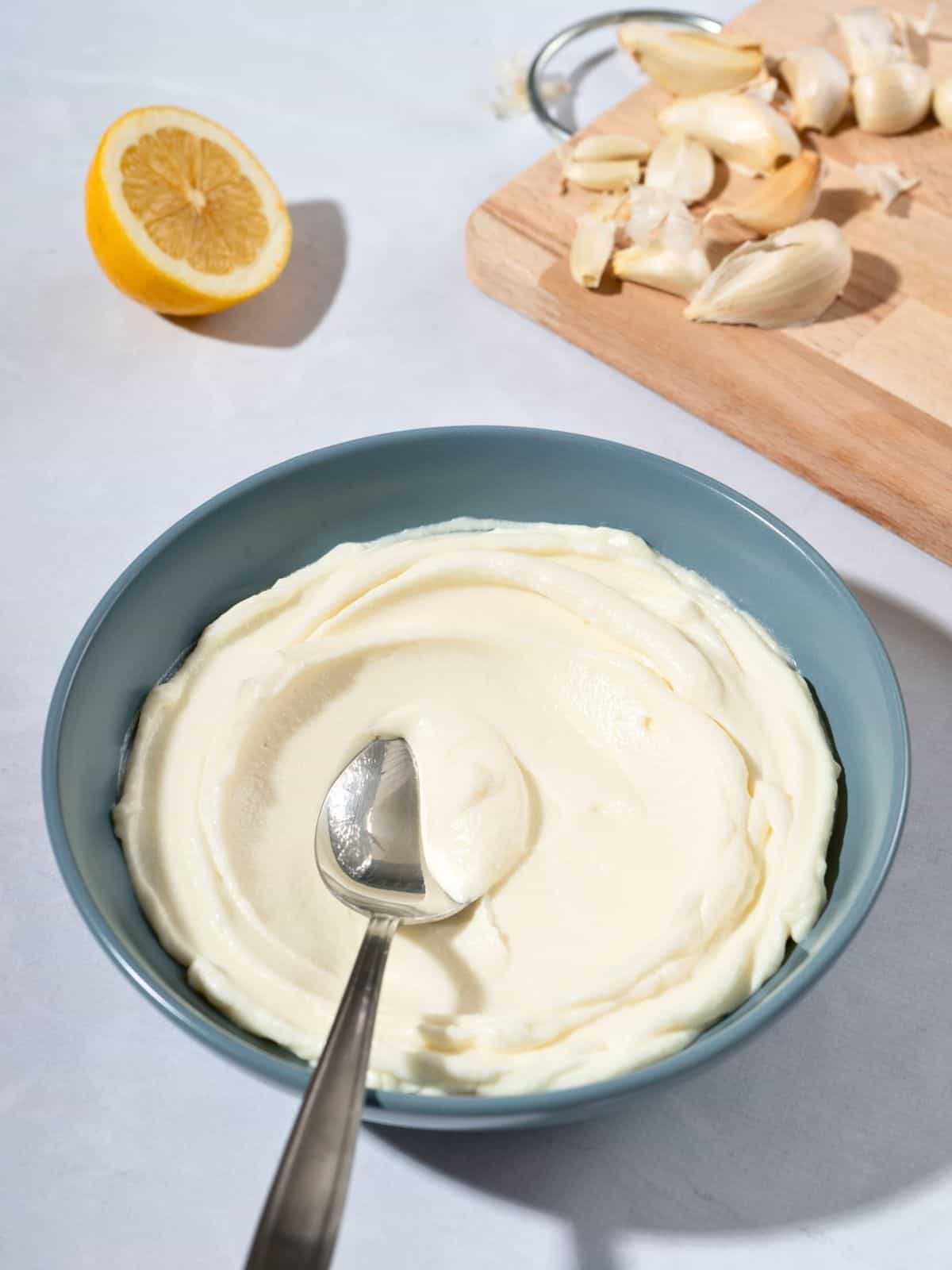
Jump to:
✔️ Why This Recipe is Great
Low Histamine Sauce: this simple emulsification is one of my favorite low histamine sauces, using just 4 ingredients to create a mildly thick sauce packed with flavor. It's traditionally served with chicken & flatbread, but the possibilities are endless.
Base for Other Sauces: while very sharp in flavor by itself, toum blends well with a bit of homemade macadamia nut butter or any seed butter to make a simple salad dressing or sauce for meat; see below for other ways to use toum.
Use Up Extra Garlic: this is a great way to use up any excess garlic from a recent haul or CSA, or even a bunch you found that's about to start going bad. It's very versatile, and a great flavor enhancer in soups and on breads!
🧄 Ingredients
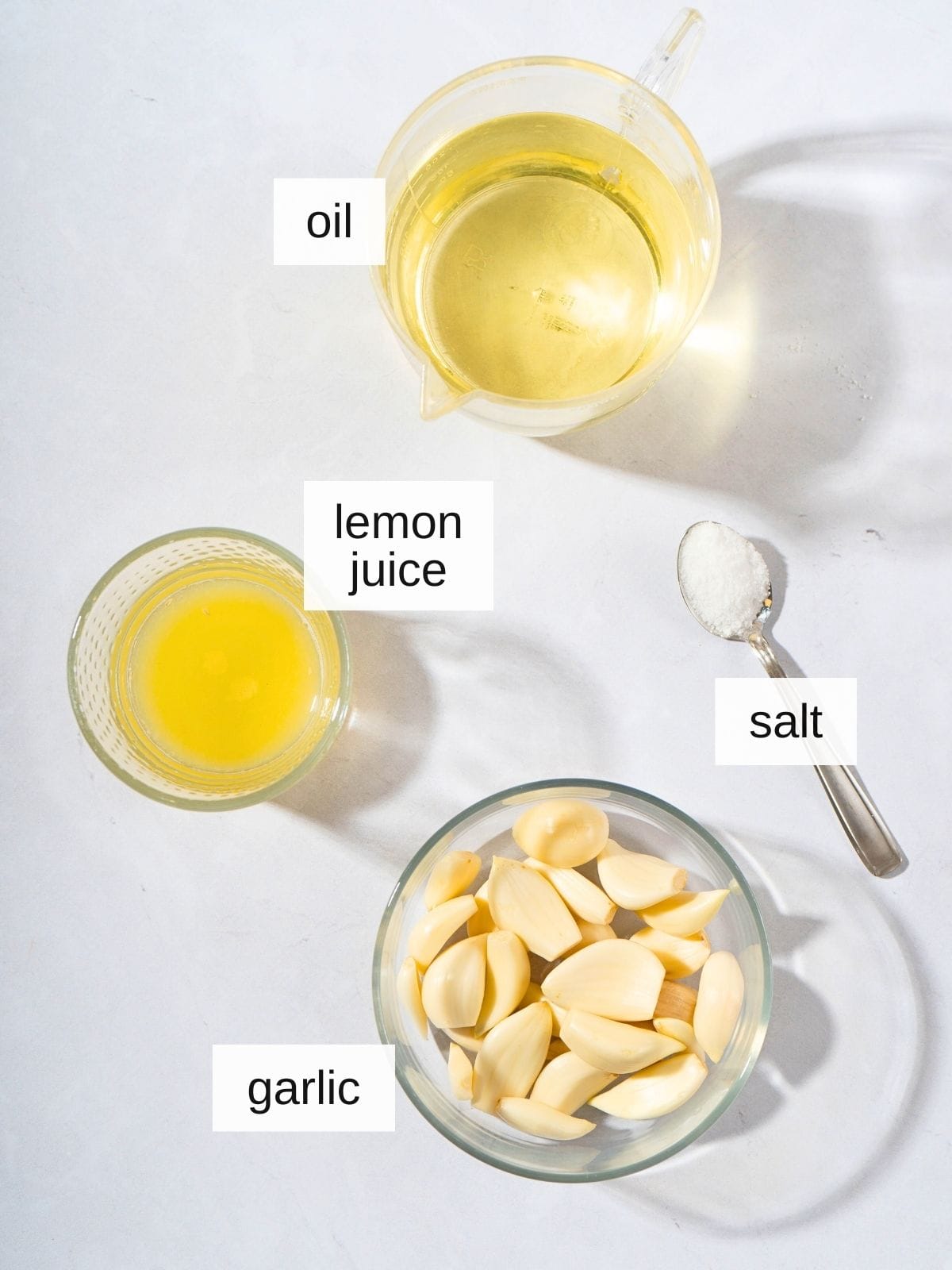
Fresh Garlic Cloves: these need to be peeled, and if the garlic isn't fresh from the market, you'll want to cut each clove in half and remove any green stems growing in there (which will make the toum bitter).
Neutral-Tasting Oil: I very highly recommend using avocado oil for a less inflammatory low histamine oil option, but since toum is enjoyed in such small quanitities, you can use any neutral-flavored oil you have on hand, even sunflower or grapeseed (which are both generally inflammatory).
Freshly-Squeezed Lemon Juice: it's very important that this is fresh from the fruit; you'll only need about one lemon to get the amount of lemon juice needed to make toum. While you need surprisingly little of this citrus juice to make such a large amount of this sauce, I know that even ¼ teaspoon of lemon juice worries some of my readers, so you may want to try my mustard toum recipe, instead (no lemon juice).
Ice Water: this is only as-needed, if needed to maintain the emulsion, but make sure it's fresh-off-the-glacier ice cold.
See recipe card for exact ingredients and quantities - there are no substitutions for the ingredients in toum, except for choosing what oil you use.
📝 How to Prep Fresh Garlic Cloves
Preparing fresh garlic cloves is a crucial step in making garlic toum sauce, as the freshness and quality of the garlic will significantly affect the flavor and texture of the final sauce. When at the market, fresh garlic should be firm to the touch with a papery skin and no signs of sprouting.
- Before you begin, separate all the cloves from the bulb.
- Next, peel each of the cloves; see below for two ways to quickly peel garlic cloves.
- Then cut each clove in half and remove the germ (little green sprout inside). If you don't have any sprouts in your garlic, that means it's quite fresh, and you can just move on to making your toum. If you do find sprouts, simply slice the clove in half lengthwise and use the tip of your knife to pry out the sprout, then move on to the next clove.
There are multiple ways to peel garlic cloves. My favorite method is the 'shake' technique, which involves placing the cloves in a hard container with a lid, such as a mason jar, and shaking vigorously for about 15-30 seconds. The skin should loosen, allowing you to easily remove it.
Another method is the 'crush' technique, where you place the flat side of a knife on top of the clove and gently press down until the skin cracks, making it simple to peel off. This can take some finesse, so don't worry if your first few cloves get over-crushed.
One reason to remove any green stems or "germs" from the center of the garlic cloves is that they can impart a bitter taste to the sauce. As garlic ages, these germs develop more prominently, so it's especially important to remove them if the garlic isn't freshly harvested.
🥣 How to Make Toum (Step-by-Step)
Step 1) Start by slicing the garlic cloves in half and carefully removing any green sprouts inside (image 1); discard any cloves that appear dried out or shriveled.
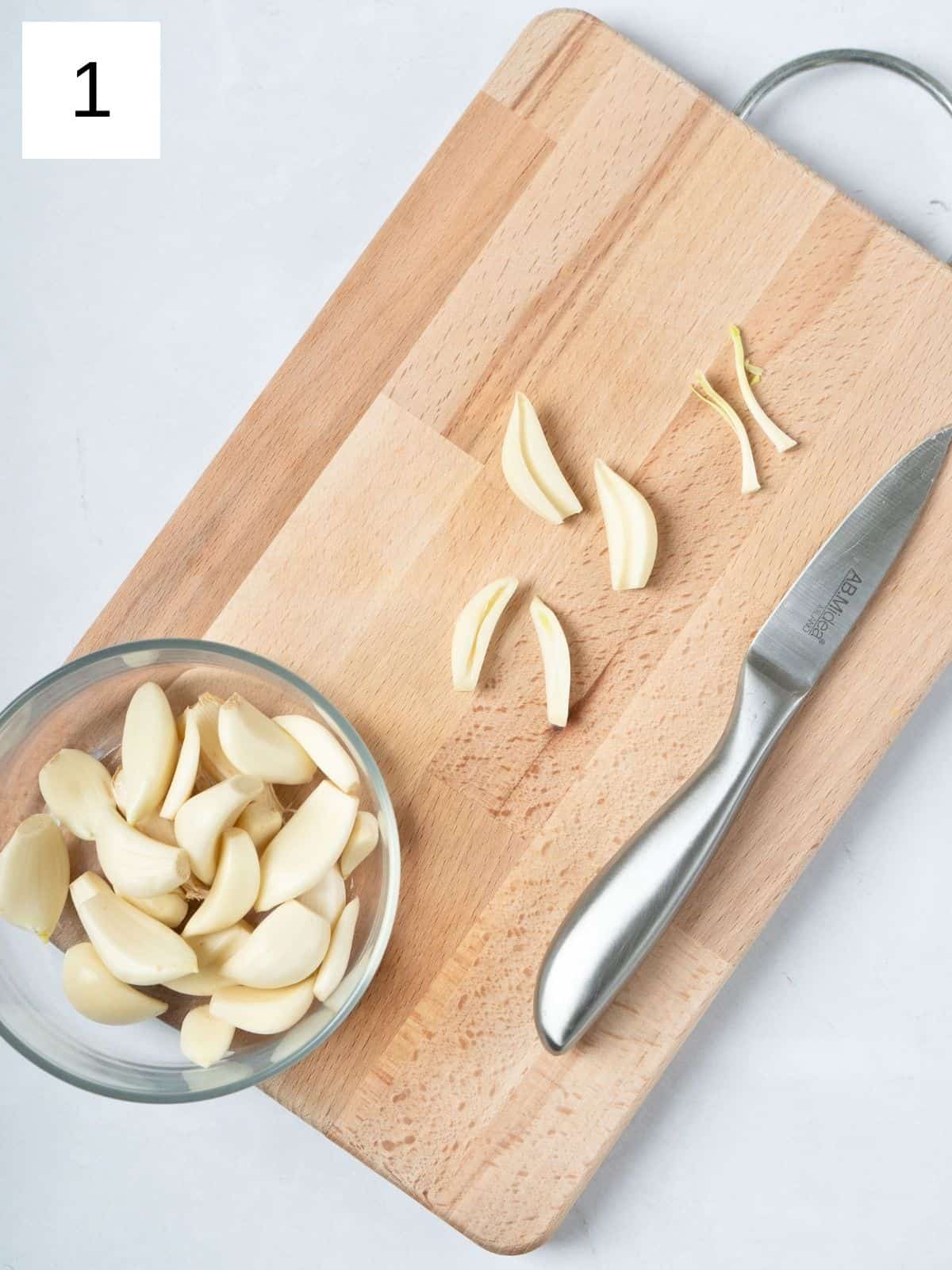
Step 2) Place the garlic halves with the salt in a food processor (image 2). Pulse until the garlic is finely minced, pausing to scrape down the sides of the processor bowl as needed to ensure even mincing (image 3).


Step 3) With the processor running on low speed, begin to drizzle in the oil very slowly. This process should take approximately 5-7 minutes. Maintain a slow, steady stream of oil to ensure a stable emulsion, which is what makes it mayo-like (image 4).
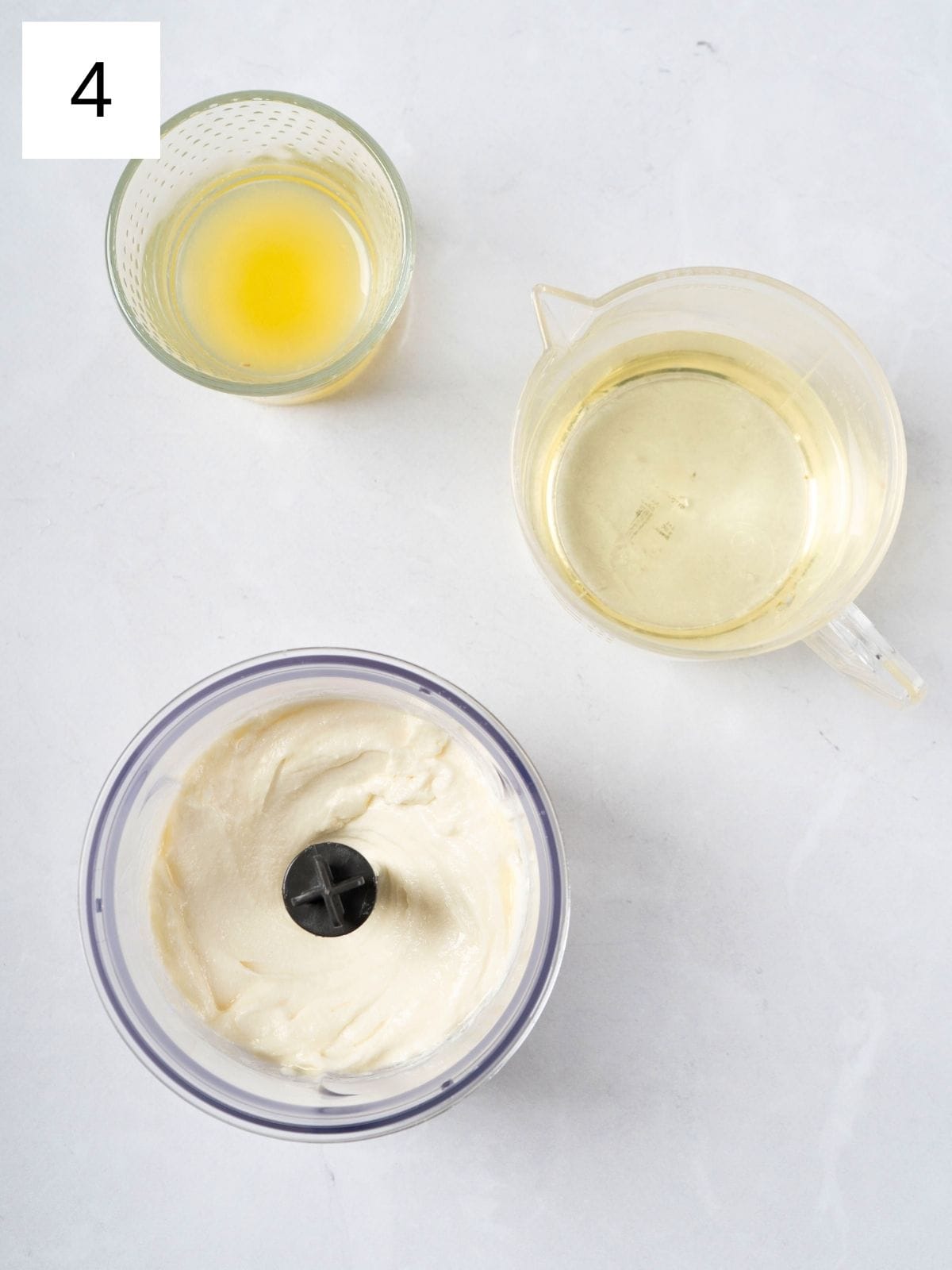
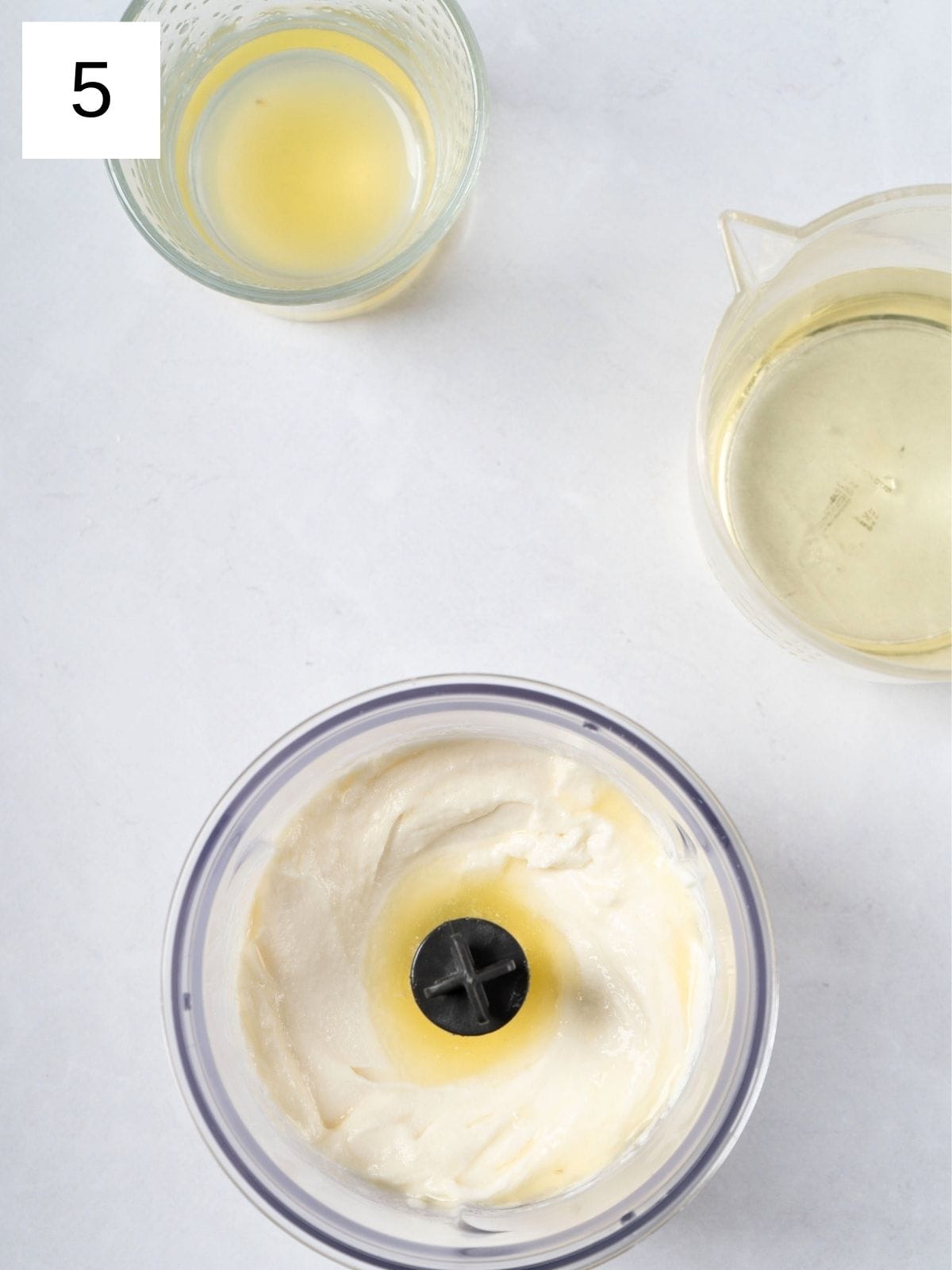
Step 4) After you've added about a third of the oil, slowly pour in a small amount of lemon juice (image 5). Continue to alternate between adding the oil and lemon juice until both are fully incorporated (images 6 & 7). If at any point the mixture appears to be too thick or begins to separate, add a half tablespoon of ice water to help re-emulsify the sauce.
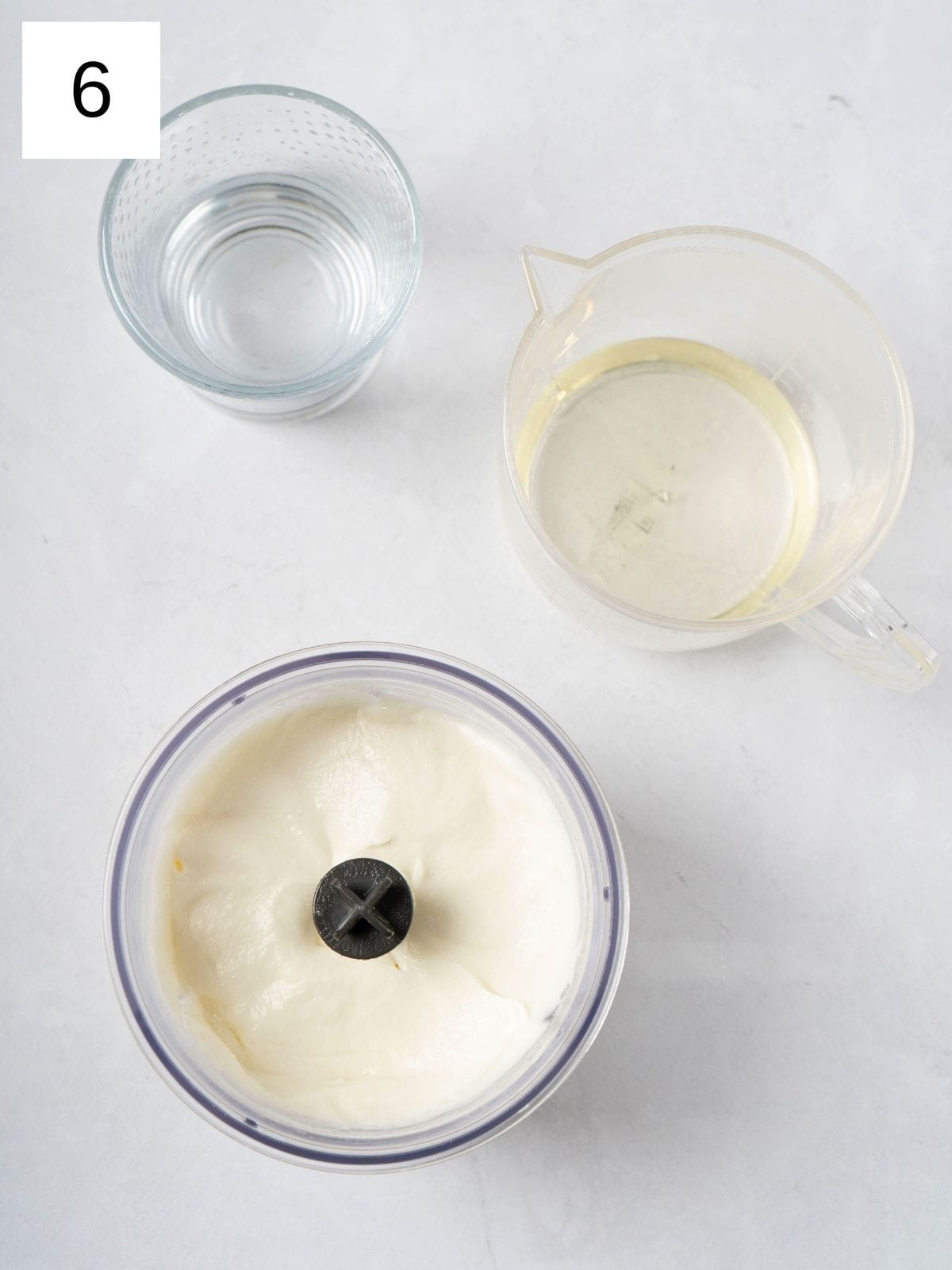
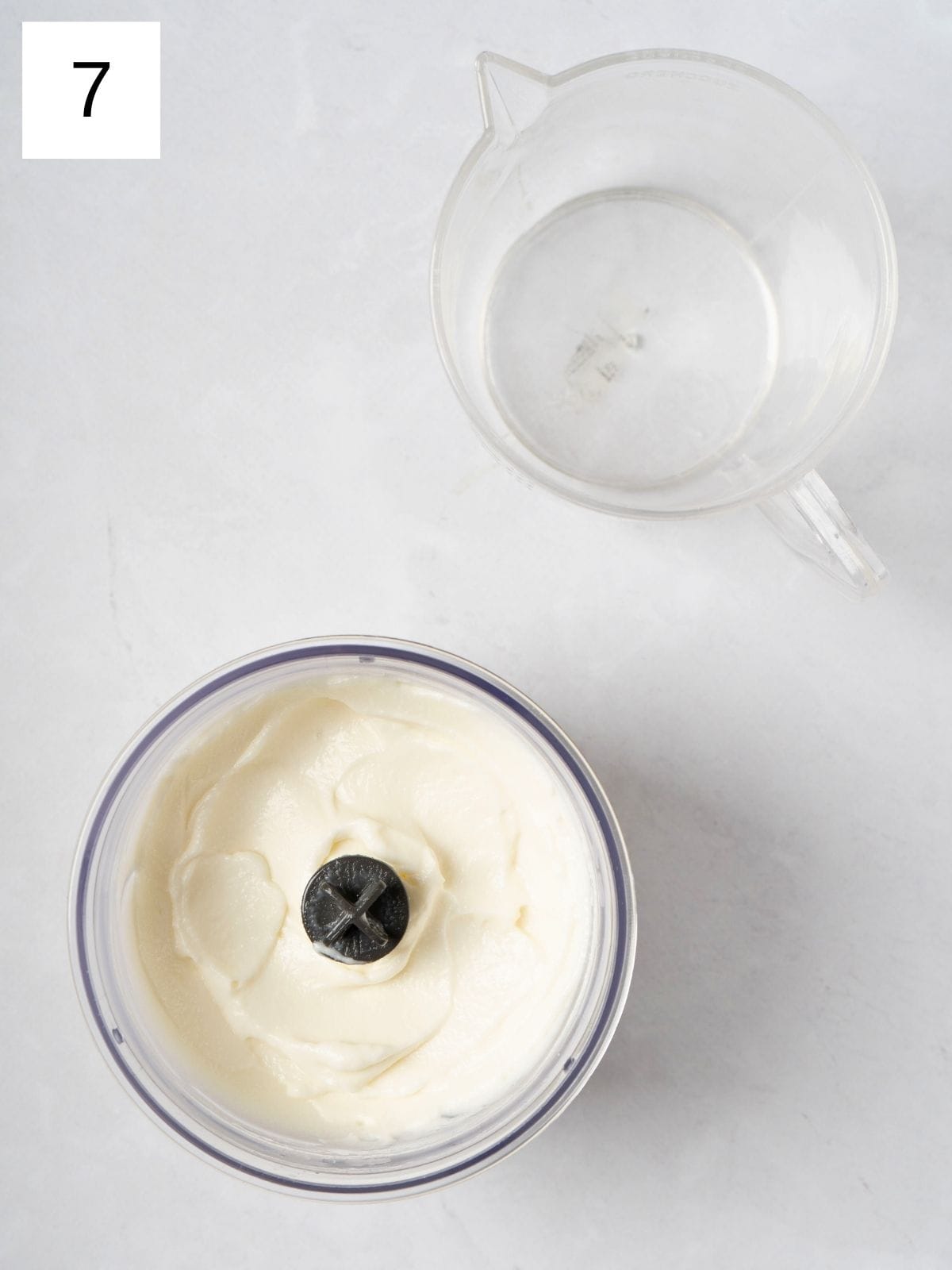
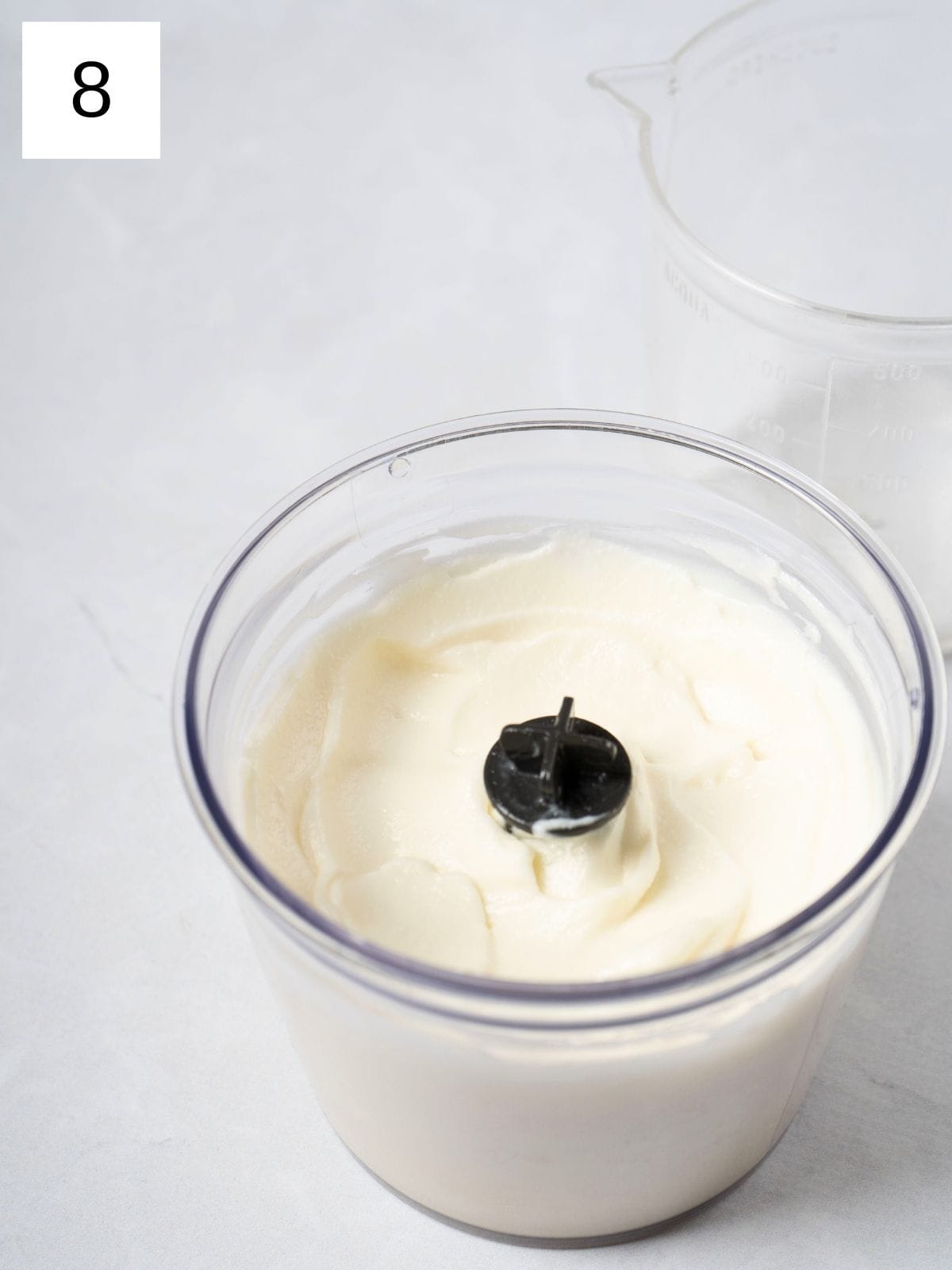
Step 5) Continue processing the mixture until you achieve a light, fluffy, and creamy consistency (image 8). The final product should resemble a pale, thick sauce similar to mayonnaise, but even more flavorful.
Taste the sauce and adjust the seasoning as needed, adding more salt or lemon juice to suit your taste preferences and personal tolerances. As you test the flavor, keep in mind that this is a VERY sharp, strong condiment, meant for dipping and spreading.
🍋🟩 Variations
- Spicy Toum - if tolerated, you can add up to 1 tablespoon of hot chile powder to the emulsion at the same time as you're adding the rest of the oil in the last step.
- Lime Toum - if you don't tolerate lemon but do tolerate lime, you can swap out the 3 tablespoons of lemon juice for 4 tablespoons of lime juice. Make sure to use regular limes, not sweet limes.
- Vinegar Toum - I have NOT tried this, but you could likely swap out the lemon juice for the same amount of white vinegar or apple cider vinegar.
See my mustard toum recipe for a tangy, lemon-free twist on the classic.
🥘 Storage
Honestly, I don't recommend freezing toum, as it will definitely break the emulsion that makes it so fluffy, and will weaken the slight acidity from the lemon juice. However you can easily cut the measurements in half or a third to make less sauce at once, still following the instructions as written.
For low histamine eaters, you'll want to quickly store the sauce after eating, and use it within 2-3 days, though if you don't eat a low histamine diet, the toum will keep well stored in the fridge for up to 10 days. I like to make a large batch, and then use it in other dishes when doing low histamine meal prep, as it won't be important to maintain the emulsion once it's mixed into another dish.
👨🏻🍳 Expert Notes & Tips
Lemon Juice + Histamine: though lemon juice is generally well-tolerated in such tiny portions (½ teaspoon), some may not be able to use it. Proceed with caution.
Garlic and Histamine: note that there is a small subset of lectin-sensitive people who may not tolerate garlic well, so check it individually before making a batch of homemade toum.
Alternating Ingredients: lemon juice is the emulsifier in this recipe, meaning that it's the ingredient which helps the garlic whip up with the oil to create a garlic mayo consistency without the egg yolk or any stabilizers. Make sure you alternate adding the lemon juice and oil in order to keep the emulsion intact and maintain that same whipped consistency.
🥗 Ways to Use Toum
- As a Marinade: Use toum to quick-marinate chicken, pork, or lamb for 15 to 20 minutes before grilling or roasting to infuse the meat with a robust garlic flavor.
- Garlic Bread Spread: Spread toum on your favorite low histamine bread and toast it for an instant garlic bread with a Middle Eastern twist.
- Dressing for Salads: Whisk toum with some more extra virgin olive oil and lemon juice to create a tangy dressing for salads.
- Dip for Vegetables: Serve toum as a dip for raw or roasted vegetables for a healthy and flavorful snack.
- Sauce for Pasta: Mix toum with pasta for a simple and delicious garlic pasta dish.
- Enhancer for Hummus: Swirl some toum into some hummus without garlic for a completed version of the classic dip.
- Sandwich Spread: Use toum instead of mayonnaise or mustard in sandwiches and wraps for a garlicky kick.
- Flavor Boost for Soups: Stir a spoonful of toum into low histamine soups or stews for a rich garlic flavor.
- Condiment for Kebabs: Serve toum as a side sauce for any type of kebab or skewered meat.
- Base for Creamy Sauces: Blend toum with cream or cream cheese to create a creamy sauce for meats or vegetables.
- Seasoning for Roasted Nuts: Toss nuts with toum and roast them for a flavorful snack.
- Sauce for Potatoes: Drizzle or mix toum with roasted or vegan mashed potatoes for an extra layer of flavor.
- Flavor Enhancer for Grains: Mix toum into cooked rice, quinoa, or couscous to infuse them with garlic flavor, then serve on the side with veggies or meat.
❓ What to Serve With Toum
🙋 Frequently Asked Questions
The difference between toum and aioli lies primarily in their ingredients and regional origins: toum is a Lebanese garlic sauce made from garlic, oil, lemon juice, and salt, traditionally without any eggs; whereas aioli is a Mediterranean sauce that typically includes garlic, egg yolks, oil, and sometimes lemon juice, resembling a garlic-flavored mayonnaise.
To fix a broken toum, you have three options. You can slowly drizzle in more oil while continuously blending; or you can do the same thing with up to one tablespoon of ice water; or you can start with a fresh garlic clove and a small amount of oil in a clean processor, blend until smooth, and then gradually add the broken toum to re-emulsify the mixture.
To make toum thicker, ensure that the emulsion process is done slowly by adding oil in a thin, steady stream while continuously blending; if it's still too thin, you can add more oil or pureed garlic in small amounts until the desired thickness is achieved.
Reducing bitterness in toum can be accomplished by using fresh garlic that isn't sprouting, as older garlic can be more bitter, and by removing the germ (the inner sprout) from the garlic cloves before blending. Some people also soak the cloves in ice water for a few minutes before making the toum to lessen the pungency, like a cold blanche.
Toum is sometimes perceived as spicy because it contains a large amount of raw garlic, which has a naturally sharp and spicy flavor. However the intensity of the garlic in toum is what gives the sauce its characteristic zing and heat.
📖 Recipe
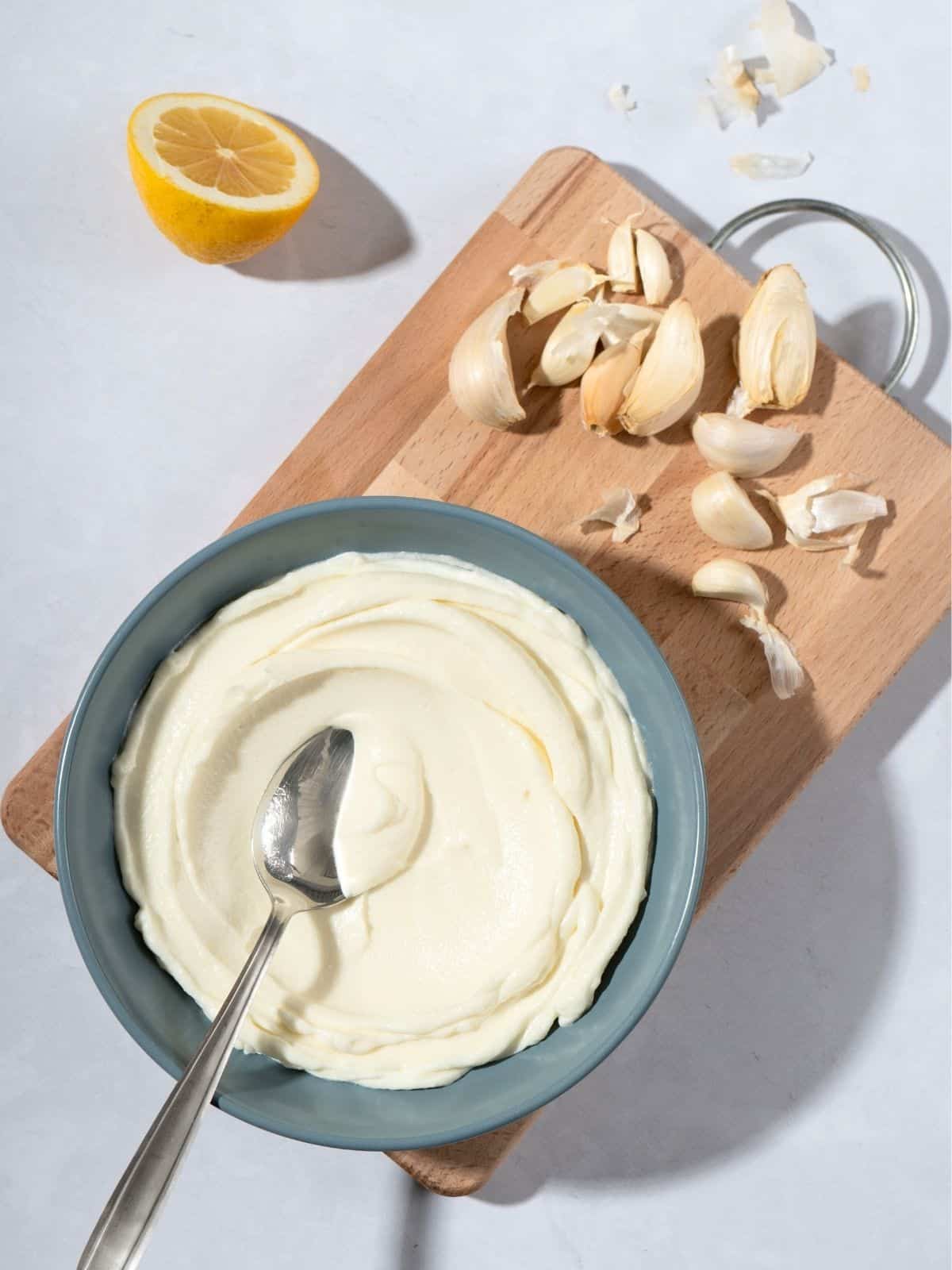
Easy Toum (Whipped Vegan Garlic Mayo)
Equipment
- Food Processor
Ingredients
- ½ cup fresh garlic cloves peeled (about 60g-70g)
- 1 teaspoon salt more in desired
- 1 ½ cups neutral-tasting oil i.e. avocado oil
- 3 Tablespoons freshly-squeezed lemon juice
- up to 3 Tablespoons ice water if needed
Instructions
- Start by slicing the garlic cloves in half and carefully removing any green sprouts inside; discard any cloves that appear dried out or shriveled.
- Place the garlic halves with the salt in a food processor. Pulse until the garlic is finely minced, pausing to scrape down the sides of the processor bowl as needed to ensure even mincing.
- With the processor running on low speed, begin to drizzle in the oil very slowly. This process should take approximately 5-7 minutes. Maintain a slow, steady stream of oil to ensure a stable emulsion, which is what makes it mayo-like.
- After you've added about a third of the oil, slowly pour in a small amount of lemon juice. Continue to alternate between adding the oil and lemon juice until both are fully incorporated. If at any point the mixture appears to be too thick or begins to separate, add a half tablespoon of ice water to help re-emulsify the sauce.
- Continue processing the mixture until you achieve a light, fluffy, and creamy consistency. The final product should resemble a pale, thick sauce similar to mayonnaise, but even more flavorful. Taste the sauce and adjust the seasoning as needed, adding more salt or lemon juice to suit your taste preferences and personal tolerances. As you test the flavor, keep in mind that this is a VERY sharp, strong condiment, meant for dipping and spreading.

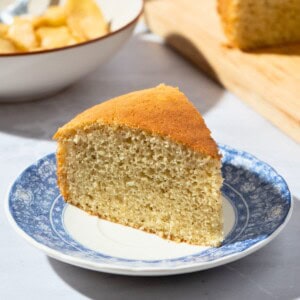











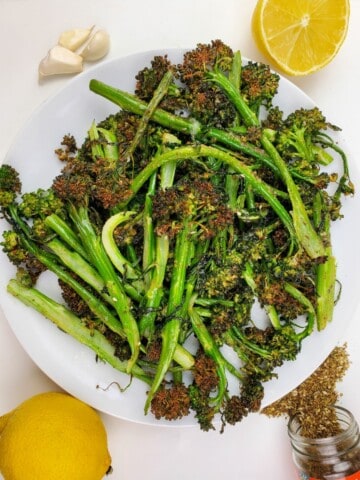
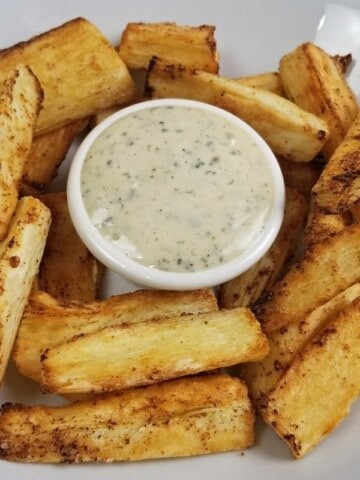
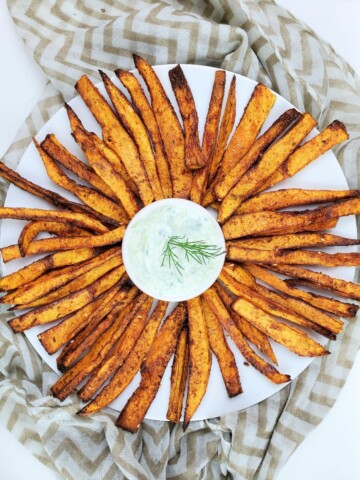


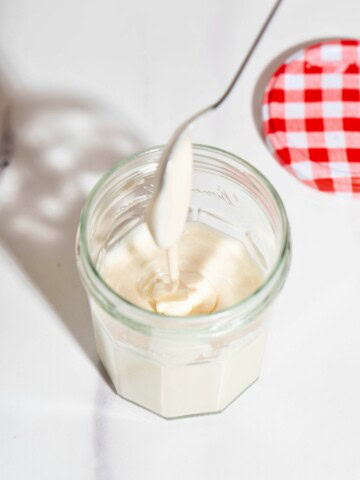

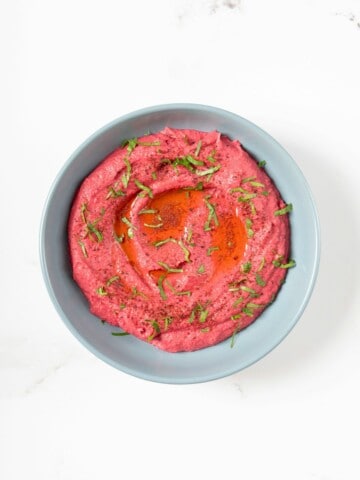
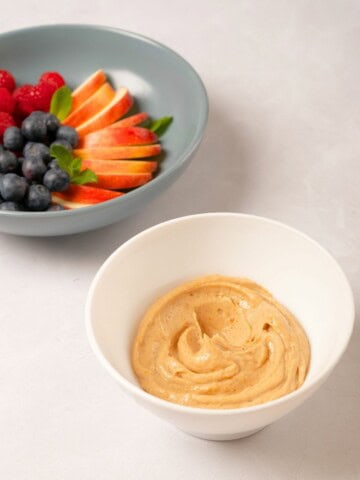
Comments
No Comments